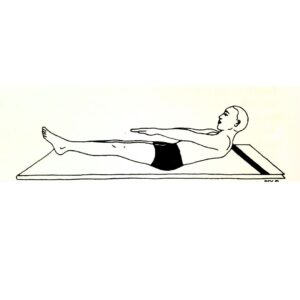Simhasana (Lion Pose) stands out among yoga postures as being among the more unique practices available today. Where other poses focus solely on stretching physical areas of your body, Simhasana goes one step further by combining body position with vocalization similar to an animal roar. This unique trait gives rise to its name – Lion pose; amplifying its effects through this harmony between sound and posture.
Simhagarjanasana (Lion roaring pose) should be at the core of every yoga practitioner’s practice regimen due to its ease and accessibility for practitioners at all skill levels. Once individuals master Lion Asana as their foundational pose, they can customize it further based on fitness level or body composition by adding variations and challenges tailored specifically for themselves.
This guide serves as an accessible and thorough introduction to Lion Pose yoga, providing both simplicity and efficacy when practicing it. Readers will gain invaluable knowledge from Simhasana basics to its applications in Singhasan yoga practice – before venturing further into any specifics regarding this yoga posture.

What is Simhasana (Lion Pose Yoga)?
Simhasana comes from Sanskrit, where “Simha” translates directly to “Lion,” while Asana stands for pose or posture; therefore it directly translates as Lion Pose Yoga in English. Simhasana finds place both traditional Hatha yoga practices as well as modern ones, exuding strength, poise and the majestic nature associated with lions.
Procedure
- Start in Vajrasana pose by placing both knees about 45 centimeters apart while touching both feet with both toes firmly touching for the duration of this posture.
- Lean forward gently and place both palms of your hands flat on the floor between your knees with fingers facing in toward your body.
- Unfold both arms fully, arch your back slightly, and straighten both of them so your entire body can rest on them for support.
- Tilting backwards creates a comfortable tension without strain for your neck.
- Close your eyes if it feels comfortable to keep an inner focus; otherwise keep them open and concentrate on the center of your eyebrows in order to participate in Shambhavi Mudra.
- Keep your mouth shut during your pose to maximize its effectiveness and optimize results.
- Relax both facial and body muscles for optimal posture of the neck.
- Straighten your legs and transition back to a sitting position – thus concluding the Lion Pose with grace and mindfulness!
Benefits of Simhasana (Lion Pose)
Physical Benefits of Simhasana (Lion Pose):
- Improves throat and face tissues not normally reached through other poses.
- Helps treat throat infections as well as respiratory tract issues.
- Can reduce tension, fear anger frustration or emotional strain.
- Gets rid of introverted and nervous tendencies.
- Eyes, face, throat, tongue vocal chords, respiratory tract diaphragm in the chest area and fingers are worked out during therapy sessions.
- The spinal cord extension process is completed.
- Physical stability improves as a result.
Therapeutic Effects of Simhasana (Lion Pose):
- Cure bad breath.
- Treat Stuttering with fluency techniques.
- Reduce teeth grinding/grinding to some degree
- Treat jaws that clench their teeth
- Reduce eye-burn.
- Help prevent throat sagging
- Reduce wrinkles
- Tight neck muscles were massaged.
- Tone of voice has been improved.
Some simplified modifications for Simhasana
- Lotus Pose Variation: If Simhasana at Vajrasana (Thunderbolt Pose) is too uncomfortable, try switching over to Padmasana (Lotus Pose). Enter Padmasana by crossing both legs together with opposite feet on top, before repeating these same steps to achieve Lion Pose while maintaining Lotus posture.
- Frog Pose Variation: An alternative way of practicing Simhasana when sitting on the floor in Mandukasana (Frog Pose). Begin by lying on your back with knees wide apart and feet flat on the ground; place both of your feet between your knees while following steps from Lion’s Breath while remaining in Frog Pose position.
Learn more Yoga asanas with Himalaya yoga Teacher Training
Enroll in the Himalaya Yoga Teacher Training‘s yoga courses to dive deeper into the practice of yoga and increase your understanding beyond Simhasana. Our extensive yoga Teacher Training in Rishikesh program offers an extensive curriculum that covers many yoga poses, allowing students to learn and master different postures under the guidance of experienced instructors. If you’re a beginner or an experienced practitioner, our 200 hour yoga teacher training in Rishikesh program offers an opportunity to increase your knowledge of yoga and expand your practice. Take a journey through the transformative experience of yoga teacher training in the peaceful landscape of Rishikesh and unleash the benefits of the practice experiencing and learning many yoga poses directly.



